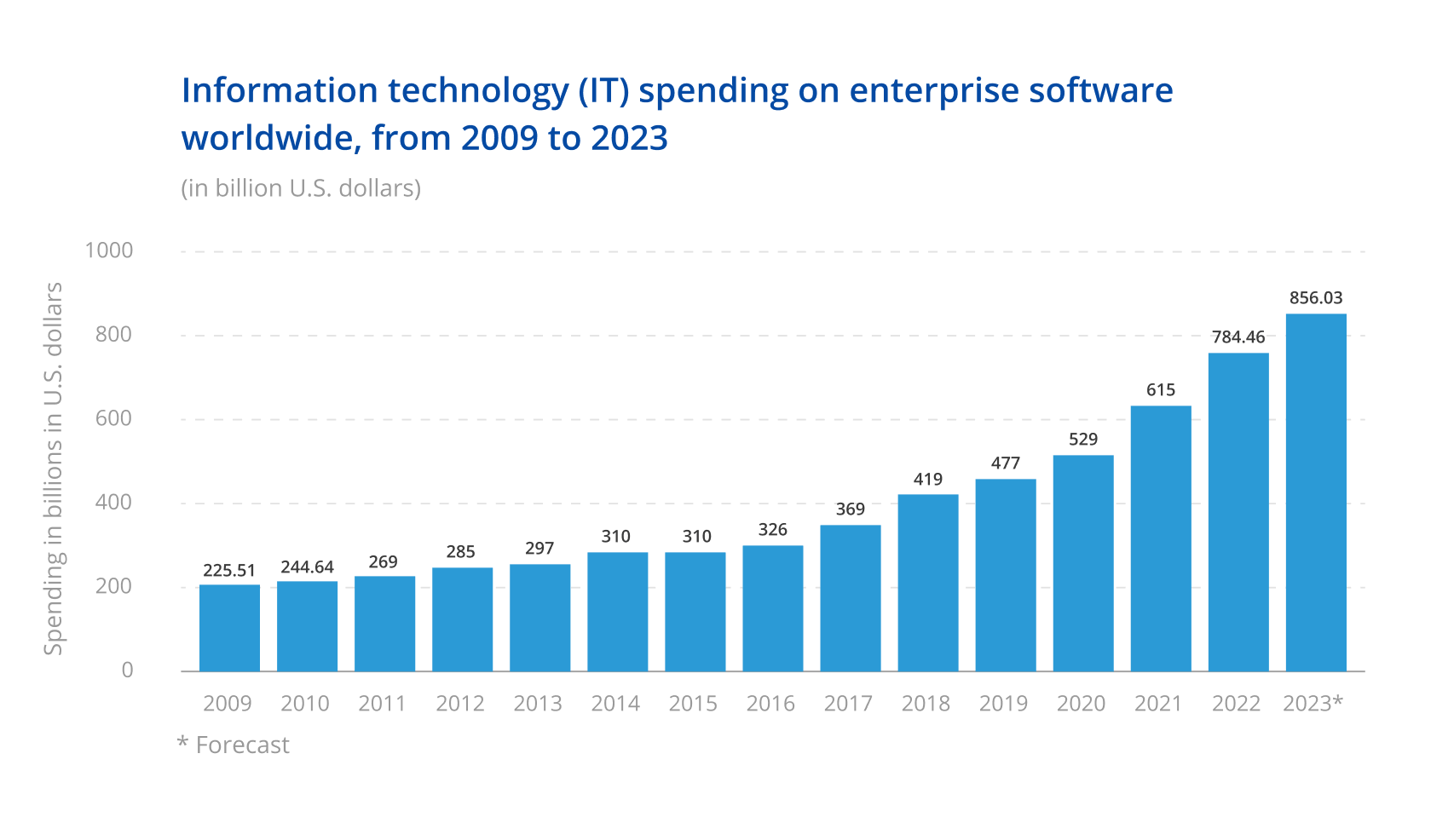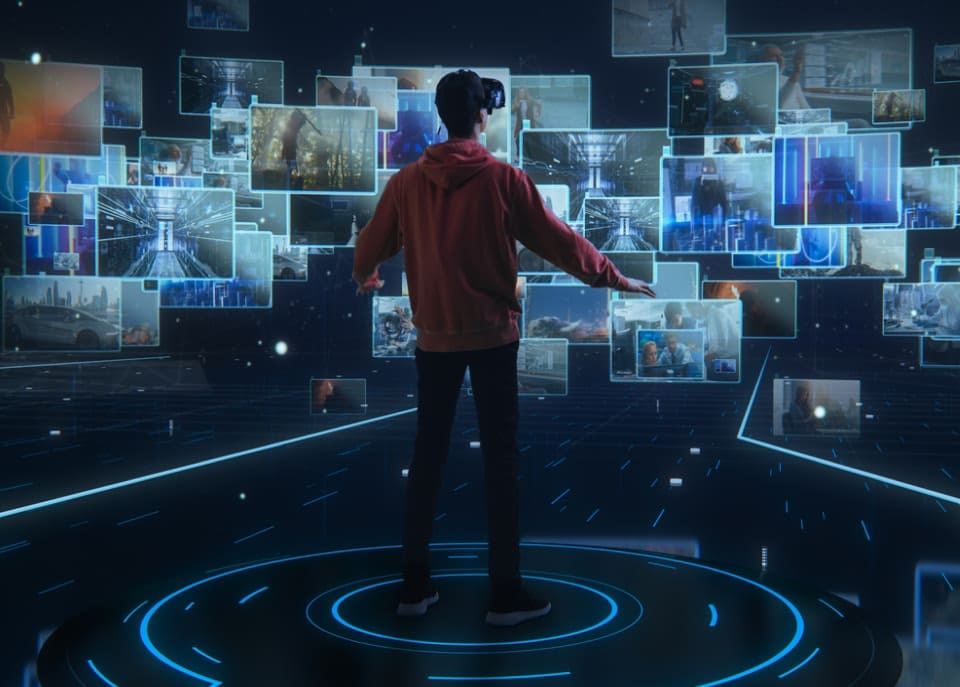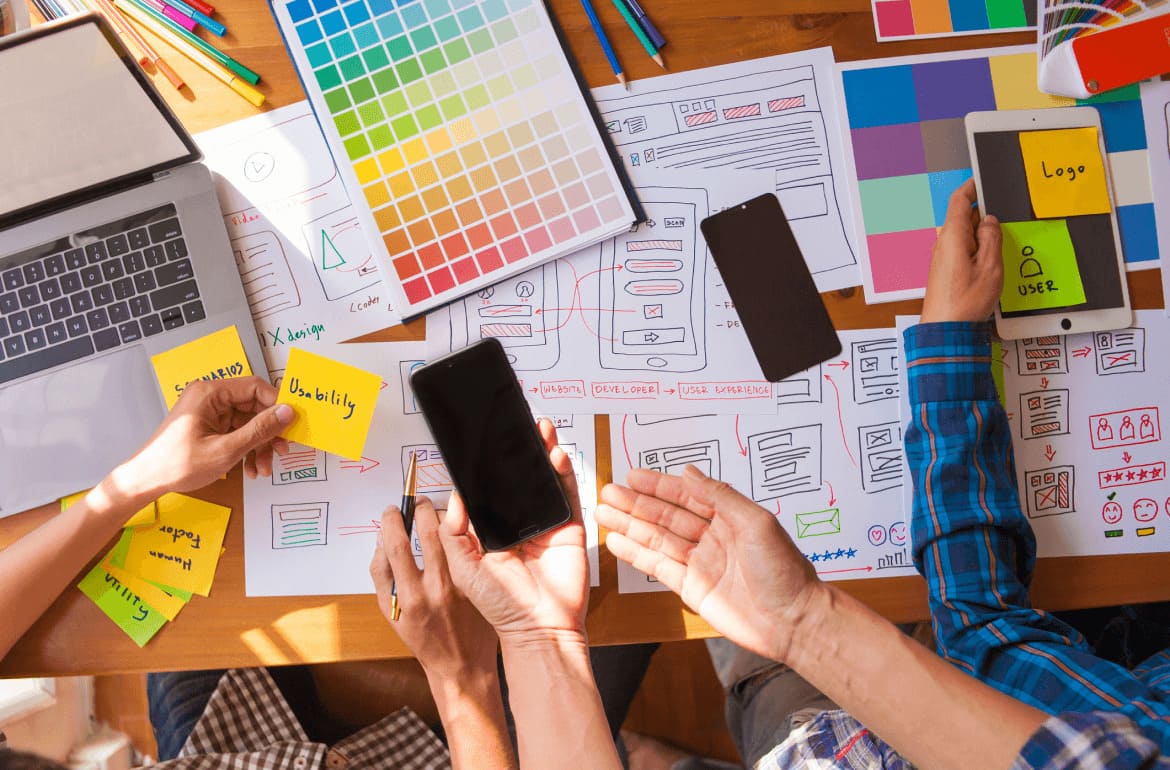Today, an increasing number of enterprises are embarking on the path of global advancement – this is due to both the desire to optimize old systems with high-end technologies and to get an edge in the market. In addition, endless businesses are started around the globe where entrepreneurs realize the significance of future-proof quality software.
This entails the high demand for enterprise software across all verticals. In 2022, IT spending on enterprise software reached 783 billion U.S., and the CAGR parameter is expected to exceed 10% for 2023. But what comes as an integral part of enterprise software? Surely, it is UX design that forms the outer shell of and determines the software’s usability.

Source: statista.com
What Is the Meaning of Enterprise UI / UX Design and Why It Matters?
Enterprise UX is about building user experience for applications designed to automate various business processes within companies. Intended for the company’s employees, i.e., professionals, it serves a bit of different functions and is thereby built on principles different from consumer design.
The focus on quality enterprise UX is getting more apparent every year – the industries are experiencing turbulent changes, and the need for a holistic approach to usability is no longer a matter of debate but rather a universally recognized fact.
Large corporations are increasingly realizing that only by investing in UX will they be able to handle internal difficulties, reduce development costs, and support and train employees. This will concurrently increase the level of loyalty and efficiency of employees, help them become a company at the cutting edge, and get a tangible competitive advantage in the market.
What Are the Specifics of Enterprise UX Solutions?
Generally, enterprise solutions are intended for day-to-day routine usage by employees, which defines a number of its specific aspects:
First, it is the scope. Enterprise software is usually much more complex as they are tailored for people working in specific roles. Meanwhile, consumer products aim to satisfy the needs of an average end-user.
Objectives are another aspect that matters. Enterprise solutions are built with the thought to optimize business processes and boost employee performance. Consumer apps, on the other hand, aim to attract customers and boost revenue through enhanced customer engagement.
The type of end-user determines how easy the app’s navigation is going to be. While consumer UX prioritizes intuitive interfaces and has no specific technical capabilities, enterprise software is often more complex and more challenging to navigate.
Security and scalability are a great focus of enterprise software developers. This solution must adjust and go hand in hand with all the company’s shifts while providing top security for all the sensitive information.
Anticipated usage should not be overlooked either. Enterprise software is used on a day-to-day basis by a company’s staff to perform routine tasks and complete them with greater efficiency. On the contrary, the use of consumer solutions is quite unpredictable and depends on numerous factors.
What If You Neglect Enterprise UX?
The five aspects mentioned above determine the principles of building a corresponding solution. Unfortunately, it doesn’t play into the enterprise’s hands. Entrepreneurs tend to save money on inner software solutions, which makes them eventually lag behind consumer ones. As a result, such poorly designed enterprise applications can’t contribute to the bottom line of the company.
Neglecting the quality of your enterprise app and its UX can lead to a bunch of negative impacts:
Inefficiency
Inefficiency, which is definitely converted into costs. When tasks are not completed, it often leads to involving more people in the projects and hiring new specialists. This will ultimately drain a company’s budget, as human resources turn out to be much more costly than software.
Missed deadlines
Unusable software has the power to significantly slow down the business processes. Even mundane tasks may turn out difficult to complete, and infrequent users will waste time remembering basic things and refreshing the patterns. Long instructions and coworker’s assistance won’t help out – valuable time that could be spent on more complex tasks is wasted.
High support costs
When an application’s usability is poor, employees often need to contact support for help in figuring out how to use it and fix bugs.
Low employee motivation
An application that discourages work and doesn’t let get tasks be done may become extremely frustrating for employees. Since the aspect of employee motivation is undeniably vital for business growth, such gaps will reduce productivity at work and company performance on the whole.
High training costs
Poorly conceived and designed applications are difficult to learn and use, so they require much more training.
Having considered the five negative impacts, we can see the crucial role of well-conceived enterprise design for the company’s processes and growth across the board. This necessitates a responsible approach to enterprise UX and making sure it will speed up workflows.
Key Principles of Building Enterprise UX
Now that we know that bad enterprise UX is detrimental to your business, let’s delve into how to make a good design. These are some of the principles that form the foundation of quality enterprise design.
Design with business goals in mind
Enterprise design is a business tool, not a goal in itself. And if it doesn’t help solve business problems, no matter how aesthetic it is, you have to give it up and improve it. But it is also impossible to completely disregard the rules of the composition, current trends in design, and taste preferences. Otherwise, you can end up with mismatched colors and gaudy pics that will damage the image of your company.
It is important to keep a balance here. Your primary goal is neither engagement nor conventions, it is task success. So first, you meet the interests of business, secondly (but still important) – the visual aspect.
Make it intuitive for the user
All information on the website or application (content, pics, and interface elements) should be intuitive for users and crystal-clear in terms of usage. It is essential that users don’t have any questions when navigating the website, e.g., “Where can I find this information?”, “What will happen if I click here?” “How do I submit it?”, “Where do I click to make a cost calculation?”, etc.
In a good design, the answers to all these questions are provided in advance. A clear visualization of the structure of the site will help the user easily navigate through the sections and find the necessary information. All the website’s interface elements have to lead the user to the necessary destination.
Reflect on the workflow specifics
Processes set both the inner and outer basis for enterprise UX design because company staff frequently has to take non-linear paths to get tasks done. The interface should follow this strategy, adjust to the workflows, and facilitate processes. For this reason, designers need to have a thorough understanding of the business workflows and industry specifics that a system should align with and support through a well-thought-out interface.
Conduct systematic testing and iterations
With numerous people working for a business in different positions, it might become challenging to build a design that would work best for everyone. Yet, you can’t miss out on this factor since it is directly connected to business performance on the whole. Once there is downtime at one place – there can be delays across the board.
This necessitates consistent testing and iterations of enterprise design until you reach a point where the majority of software users are satisfied and can perform their tasks as quickly as possible. Surely, the testing processes might extend your project timeframes, but it’s always good to nip the issue in the bud.
Do not reinvent design patterns
You might want to build outstanding software with fancy UX, but don’t let it go off the rails. In pursuit of creative design, you might make it difficult for users to work with it.
There are a bunch of design patterns that everyone is used to. Most common examples include the use of specific colors (red for errors and blue for hyperlinks) and icons (envelopes for messages). So, instead of reinventing the wheel, it would be much better to recreate the existing design patterns and adjust them right to your specific requirements. Opt for traditional design solutions with responsive layouts – this will let employees focus on work, not navigating your app.
Make use of design systems
As a follow-up to the previous point, we can’t overlook design systems. They are incredibly convenient for usage, and you can find them in abundance to choose from. Their popularity is gaining velocity as they help employees speed up the processes and boost efficiency. What is great about design systems is that they:
- Enable simultaneous work on the project by several people
- Keep everything in one place
- Helps maintain the consistency of the whole solution
- Facilitate update implementation
Leveraging a design system is beneficial for such large-scale products as enterprise software to provide a shared language between a team of designers and shareholders. If your solution is intended not for internal use only, a design system can help keep or establish a brand identity as well.
Basic Qualities Each UX Design Should Have
We have expanded on the peculiarities of creating enterprise UX and what pitfalls await designers with this type of design. Still, it does not cancel out the necessity for following the basic principles of a quality design.
Look through the list to make sure yours meets all the standards. A good design has to:
Contain the optimal number of visual controls to solve the user’s problem. There should be exactly as many as the user needs.
Be intuitive. The user should have no problems with managing or searching for various categories of menus and sections. It should use the site based on previous experience with other resources. Make sure you have comprehensible controls and won’t leave the users confused or disappointed.
Be concise. Otherwise, the user will fall into the trap of information overload. Descriptions and explanations for each button and element of the site aren’t good, it is an extra burden on a working person. That’s why, do not let your users spend all their time reading instructions.
Be consistent. It’s about the content of the site, which should show a certain level of action patterns that drive a user through the entire interface. With its help, users can create templates of work with the resource. On the first contact, they get acquainted with buttons, bookmarks, icons, and other graphical elements, and next time they use the previously gained experience to perform the same tasks faster.
Be effective. Design is a means of transport that must deliver the user to the desired point of an app or website. A good interface should help perform functions faster with minimal effort. To succeed in this point, you must understand the specifics of each user (in every job position) and know what they need.
The Takeaway
Enterprise design is an integral part of enterprise software, as it is what employees are going to work with on a daily basis. This necessitates a meticulous approach to building future-proof and clutter-free solutions while studying the unique features of enterprise UX. Keep in mind the designing basics and consider enterprise specifics, and your design will be bound to streamline processes and bolster profits down the road.

















